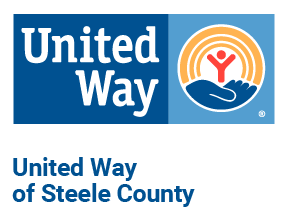What is the Federal Poverty Level?
What is the Federal Poverty level and what does it mean, really?
Just like every industry, there is a fair amount of coded language or lingo in the nonprofit world (and there are some very funny nonprofit bloggers out there who will explain them all to you if you search the interwebs). One of the terms we use very frequently at United Way of Steele County and with our partner agencies is Federal Poverty Level. Many of the UWSC built Opportunity Programs have a maximum income threshold to qualify of either 200% of the Federal Poverty Level or 185% of the Federal Poverty Level, which is what schools use to determine qualification for Free and Reduced Lunch.
Every year the federal government issues the levels which they use to determine financial eligibility for certain programs, like Medicaid and Children’s Health Insurance Programs. For 2017 the Poverty Level is set at $12,060 for a single individual or add $4,180 for each additional family member, for example a family of 4 would be $24,600. As you can see, it would be very difficult to live on this amount of income per month so help is needed.
What we’ve found is that there are a fair number of services provided for people and families at this level of poverty. But there is a large part of our population that falls between textbook definition poverty and financial stability – there are much fewer aid resources for this level of need. You may have heard the term “the working poor” which refers to people who are working but whose income falls below the rate of financial stability for a locale. This is why we, and many other nonprofits and organizations, use 200% of the Federal Poverty Level as the threshold for our program qualifications. This level represents persons and families who make too much money to get most government help but not enough to create a stable family and home life. There is evidence that in our community the income required to reach financial stability is much higher than 200% of Poverty.
Let’s walk through a month with a four person family at 200% of the poverty level. That family makes $49,200 which could be one adult working 40 hours a week with an hourly rate of $23.65 or two adults averaging $11.83/hr for 40 hours. After taxes they would actually take home $38,270. We have all heard that health insurance rates have skyrocketed. I recently sat in on a discussion of healthcare costs for a local organization. For that organization employee monthly healthcare contributions for a family were going to be about $700 plus an annual deductible of $3500. This would be a total annual cost of about $12,000 for this family. Our family now has $26,370. Housing estimates for a 2 BR apartment are around $700/mo or $8400 annually (family has $17,970 left). Childcare for two children $800/mo or $9600/yr (family has $8370 left). Transportation is $700/mo or $8400/yr and our family is now in the red and we haven’t bought food, clothes, toiletries, other essentials or other emergencies. These costs are not an exaggeration and in some cases may be conservative estimates.
You might be wondering how many of our neighbors and co-workers are in this situation. Here’s what we do know: the most recent census tells us there are 3732 Steele County residents under the Poverty level – individuals make less than $12,060. Of these, 30% are children under 16 and 14% are senior citizens. The next number we know is that at least 40% of children in Steele County schools qualify for Free and Reduced Lunch. That means they have less resources than our family of four above because they are at 185% of Poverty.
Can you start to see why our community desperately needs the agencies United Way of Steele County supports like the Food Shelf, Clothesline, Free Clinic, and Transitional Housing? And, why UWSC is building programs like Boots to Work, Incent to Save, Preschool Transportation Scholarships and others? Government programs to help the working poor are scarce if any. And it looks as if nonprofits will bear a larger burden of providing human services to all categories of need in the future.
Let’s look at one more scenario. Reliable data sources tell us the median income for Steele County is $57,858. Using the numbers from our family of four above we’ve already spent $49,230 on tax, housing, healthcare and transportation, so we have $8,628 left. Subtracting food costs ($600/mo or $7200/yr) and clothing ($100/mo or $1200/yr) we are left with $228 to manage emergencies, pay for kids’ activities, buy holiday and birthday gifts, fix the car, and many of the other expected and unexpected expenses that come up every month. This “median” family doesn’t qualify for government aid or for most local “safety net” programs. They are literally one serious illness or auto repair away from poverty.
At United Way of Steele County, we represent you, we help you look out for your neighbors. We look for the ways we can provide opportunities for individuals and families to become truly self-sufficient. We help find pathways for young people to start their career with living wages. United Way of Steele County fights for the health, education, and financial stability of every person in Steele County. To see our Impact video, text the word STEELE to 50503. To give to United Way of Steele County, text UWSC to 40403.
Kim Schaufenbuel is the Executive Director of United Way of Steele County. She can be reached at 507-455-1180 or via email at kschaufenbuel@unitedwaysteelecounty.org.

1850 Austin Road, Suite 103
Owatonna, MN 55060 (507) 455-1180
Website by: OneEach Technologies
Log Out | Log In